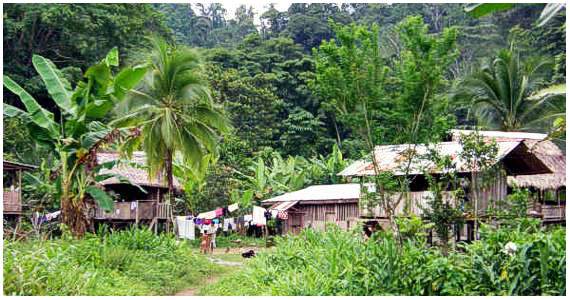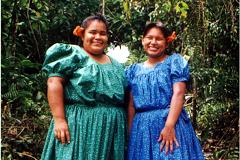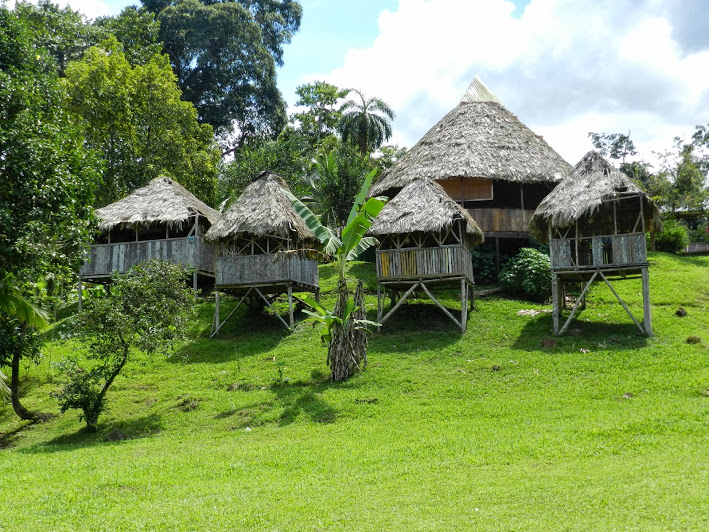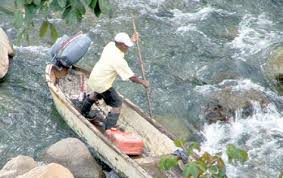
Naso Teribe Territory
The Teribes, Naso or Tjerdi are an indigenous group located northwest of the Republic of Panama, specifically west of the province of Bocas del Toro, in an area of 1,300 km², this territory covers a large part of the Teribe River basin and the San San river. There are about 3,500 inhabitants.

The Naso or Teribe people are ruled by a King, since time immemorial. According to tradition, only men could access the throne and the position was for life. When the King died, the title fell to the brother who was next in age. And when he died, the succession returned to the eldest son of the previous King, who until then held the title of Prince. If the dynasty was completely extinguished, the married men of the tribe should meet, to elect a new King, within another powerful family of the town.

Currently the government is under a mixture of constitutional and hereditary monarchy. The King is now elected by the people in a vote, men and women can run (as in the case of Queen Rufina), but they must belong to the Santana family, the ruling dynasty, which began in the first half of the 20th century. The king can be removed from office in the General Council of the People, with a quorum of 900 people, and under the charges of murder, treason and other crimes indicated in the traditional laws.

The Royal Palace is located in Sieyik, capital of the region, and in it is located apart from the King, the General Council that assists him and that is also democratically elected. The King does not have functions of command or administration of justice, in practice he is a community leader and ceremonial representative of the ethnic group.

They have a rich craftsmanship. Women are splendid executors of an ancient art. Certain tiny beads, known as beads, are traversed by nylon threads to make necklaces, earrings, rings, and other ornaments. These beads complement brightly colored dresses crossed by ribbons adorned with geometric motifs.

Its crafts are diverse and made with natural materials, among which stand out the carving in gourds and stone that show animals and other elements typical of their natural and cultural environment; they also make baskets, hammocks and homemade wooden utensils.
The BriBri Territory
In the province of Bocas del Toro, there is another group of indigenous people, the BriBri. They live in the mountains between Panama and Costa Rica and for approximately 30 years they have been fighting for the area they inhabit to be declared collective land.

The BriBri are found in places like El Guabo, Daclé, La Golondrina, Soroy, Bris, Nomuwoki, Agua de Salud, Alto Uren and Suko. These communities comprise 28,204 hectares.
Their aspiration is to prevent other ethnic groups from displacing them, since there are only 300 distributed in eight settlements.
The Bribri inhabit the banks of the Yorkin and Sixaola rivers, in the extreme northwest of the country. They live in family clans determined by matriarchal lineage and feed on fishing, hunting, and agricultural activities. Their way of life and their environment have kept them isolated from civilization, therefore, they keep their culture and vision of the cosmos intact. Their language belongs to the Chibchan family and they have their spiritual beliefs, based on their god, Sibu.

They live in small communities of single-family houses, often spread out on farmland. Their houses can be conical, square, rectangular or pyramidal, built with posts with a thatched roof that goes down to the ground. Her craft includes pottery, baskets, nets, and reeds.

Cocoa, like most indigenous groups in southern Costa Rica and northern Panama, has a special meaning in the Bribri culture. For them, the cacao tree used to be a woman and Sibu (God) became a tree. The cacao branches are never used as firewood and only women are allowed to prepare and serve the sacred drink. Cocoa is used on special occasions, ceremonies, and in certain rites of passage. Currently there are several associations of Bribri women that produce organic handmade chocolate that helps them earn a living.

Its most important artisan expression is basketry and the manufacture of musical instruments, for which they use various natural elements.